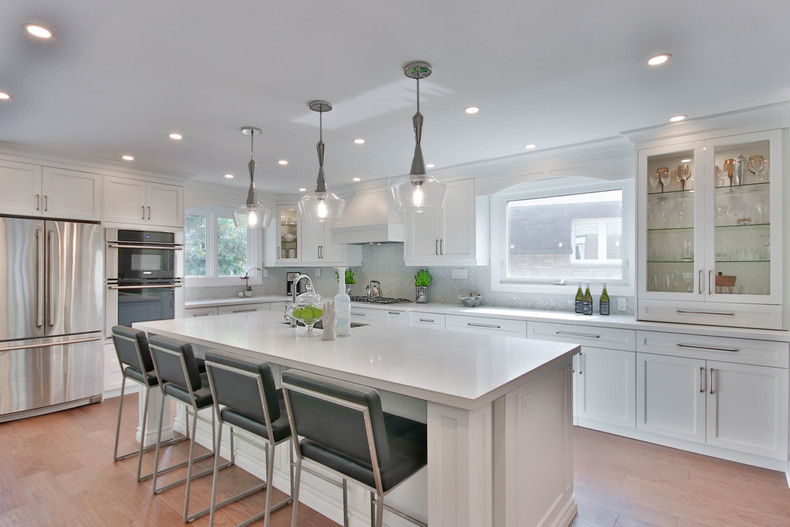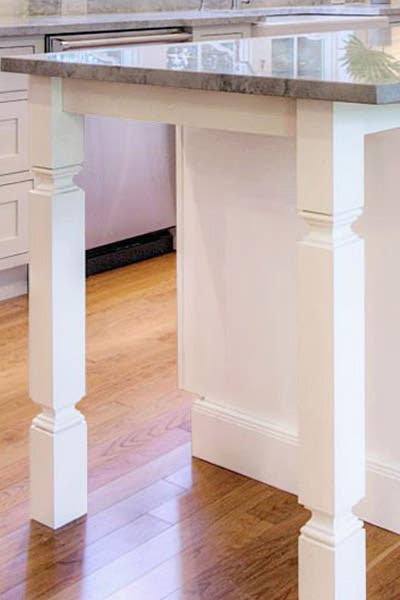Necessary Variables to Take Into Consideration When Picking Legs For Kitchen Area Island
Choosing the proper legs for a kitchen island includes a careful analysis of several elements that can considerably influence both capability and visual allure. Among these, the choice of product plays a critical role in making certain longevity, while the style must enhance the existing decoration. Considerations such as elevation and weight support are necessary for stability and convenience. As we explore these components, it ends up being clear that each decision can have far-ranging implications for the total kitchen experience. What subtleties should be considered in each of these groups to achieve the suitable balance?
Material Options
When choosing legs for a cooking area island, understanding the various product options is necessary for achieving both aesthetic charm and structural integrity (Legs For Kitchen Island). The option of material dramatically influences not only the sturdiness of the island yet additionally its general layout and capability
Metal legs, typically made from stainless steel or functioned iron, add a modern-day and commercial feel while ensuring durability and security. These products are immune to use and can support substantial weight, making them perfect for larger islands.
An additional alternative is engineered materials, like MDF or plywood, which can be more cost-effective while still offering a variety of surfaces. They might not supply the exact same degree of security as solid timber or steel. Legs For Kitchen Island. Finally, materials such as acrylic or glass can develop a contemporary appearance, though they might require added support to guarantee security.
Eventually, the option of material for kitchen island legs must align with the wanted performance and the total style of the kitchen.
Design and Design

When considering design, the form and coating of the legs are critical. Conical legs can give a feeling of agility and beauty, while thicker, extra robust legs can convey strength and stability. In addition, the surface-- be it painted, tarnished, or all-natural-- must match the cabinets and counter top products to create a unified look.
Moreover, the design of the legs can additionally mirror personal taste. Custom or attractive legs, such as those including complex makings or distinct geometric shapes, can act as prime focus, adding character and individuality to the cooking area. Eventually, the right choice will certainly not only enhance capability however also boost the visual appeal, making the cooking area island a standout function of the home.
Height Considerations
Picking the suitable elevation for kitchen area island legs is essential, as it straight affects both capability and convenience. The conventional elevation for a kitchen area island generally varies from 36 to 42 inches, lining up with usual counter top elevations. A 36-inch height is ideal for cooking and cooking, permitting for comfortable use kitchen devices and tools. Alternatively, a height of 42 inches is often favored for islands meant for bar seats, accommodating taller feceses and offering a casual eating experience.

It is also crucial to account for customers' choices and heights. Tailoring the height can ensure a comfy experience for all relative, making the kitchen area island an extra satisfying and functional room.
Weight Support
Guaranteeing appropriate weight assistance for kitchen island legs is important for both safety and security and performance. The kitchen island usually serves numerous purposes, consisting of cooking, dining, and added storage, requiring a durable support framework. When picking legs, it is important to take into consideration the general weight ability required based upon the island's intended use and the products that will certainly be placed on it.
The option of product for the legs plays a significant function in their weight-bearing capacities. Solid wood, steel, and sturdy composites normally give exceptional stamina contrasted to lighter products. Additionally, the design of the legs-- whether they are directly, tapered, or have a pedestal kind-- can affect their ability to distribute weight successfully throughout the framework.
Moreover, the leg placement must be purposefully intended to boost stability. Legs positioned at the corners or with a broader base can much better sustain larger lots. Constantly consult the producer's specs relating to tons restrictions to ensure that the legs can sustain the intended weight without compromising safety. In summary, selecting cooking area island legs with ample weight assistance is crucial for developing a safe and useful cooking room.
Installation and Maintenance
Correct setup and upkeep of kitchen area island legs are critical for making certain longevity and security. This frequently entails protecting the legs to the island base using proper bolts, guaranteeing that the legs are degree and aligned.
When installed, routine upkeep is necessary to protect the integrity and appearance of the legs - Legs For Kitchen Island. For wood legs, periodic cleaning with a wet cloth and application of appropriate timber gloss see this here can avoid wetness damages and maintain their coating. Steel legs may need a mild cleansing solution to eliminate oil and crud, followed by a dry fabric to protect against rust formation
In addition, inspect the legs frequently for indications of wear or damages, such as fractures or loosened joints. Tightening up screws or screws as required can likewise prolong the lifespan of the legs. By sticking to these installment and maintenance practices, home owners can guarantee that their kitchen area island continues to be strong and visually appealing for years to come.
Conclusion

Aesthetic coherence is critical in choosing the design and layout of legs for a kitchen island, as these elements greatly influence the overall atmosphere of the area. Tapered legs can supply a feeling of agility and sophistication, while thicker, a lot more durable legs can share toughness and security.Picking the ideal elevation for cooking area island legs is crucial, as it directly influences both functionality and convenience. In recap, choosing kitchen area island legs with ample weight assistance is crucial for developing a secure and useful culinary area.
In conclusion, selecting legs for a kitchen island demands mindful factor to consider of different aspects, including material options, design, elevation, weight assistance, and installment.